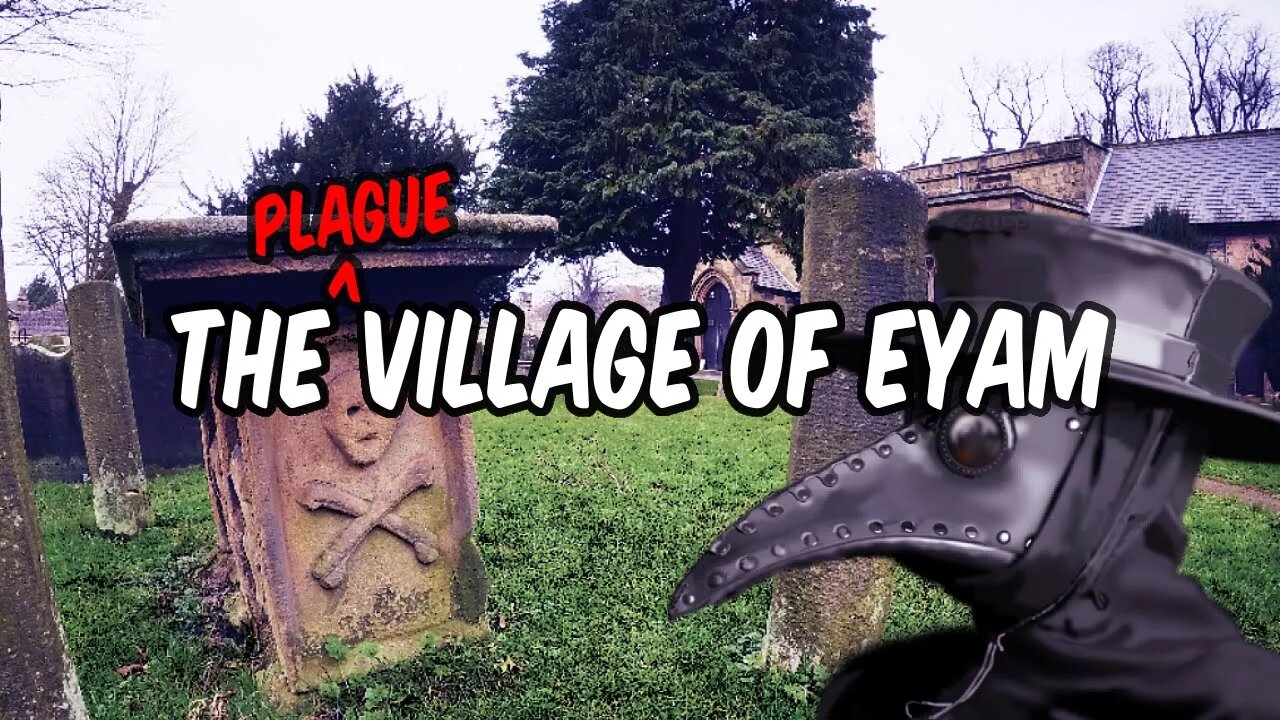Premium Only Content

Plague Victim Graves Scattered All Over This Village | Eyam
The history of the plague in the village began in 1665 when a flea-infested bundle of cloth arrived from London for Alexander Hadfield, the local tailor. Within a week his assistant George Viccars, noticing the bundle was damp, had opened it up. Before long he was dead and more began dying in the household soon after.
As the disease spread, the villagers turned for leadership to their rector, the Reverend William Mompesson, and the ejected Puritan minister Thomas Stanley. They introduced a number of precautions to slow the spread of the illness from May 1666. The measures included the arrangement that families were to bury their own dead and relocation of church services to the natural amphitheatre of Cucklett Delph, allowing villagers to separate themselves and so reducing the risk of infection. Perhaps the best-known decision was to quarantine the entire village to prevent further spread of the disease. Merchants from surrounding villages sent supplies that they would leave on marked rocks; the villagers then made holes there which they would fill with vinegar to disinfect the money left as payment.
The plague ran its course over 14 months and one account states that it killed at least 260 villagers, with only 83 surviving out of a population of 350. That figure has been challenged, with alternative figures of 430 survivors from a population of around 800 being given. The church in Eyam has a record of 273 individuals who were victims of the plague.
Survival among those affected appeared random, as many who remained alive had close contact with those who died but never caught the disease. For example, Elizabeth Hancock was uninfected despite burying six children and her husband in eight days. The graves are known as the Riley graves after the farm where they lived. The unofficial village gravedigger, Marshall Howe, also survived, despite handling many infected bodies.
-
 4:38
4:38
Michael Heaver
11 hours agoShifting UK Triggers Rapid REVOLUTION
2301 -
 58:53
58:53
The White House
3 hours agoPress Secretary Karoline Leavitt Briefs Members of the Media, July 31, 2025
24.3K30 -
 5:48:07
5:48:07
JuicyJohns
7 hours ago $2.81 earned🟢#1 REBIRTH PLAYER 10.2+ KD🟢$500 GIVEAWAY SATURDAY!
74.4K3 -
 LIVE
LIVE
IrishBreakdown
2 hours agoNotre Dame Fall Camp Practice Report
65 watching -
 1:04:08
1:04:08
Timcast
3 hours agoPelosi MELTS DOWN After Trump Accuses Her Of INSIDER TADING, PELOSI ACT Moves Forward
152K83 -
 1:54:53
1:54:53
Steven Crowder
6 hours ago🔴 Is the Sig Sauer P320 Killing People & Trump Wins the Trade War: Guest Brandon Herrera
332K244 -
 1:09:57
1:09:57
Rebel News
2 hours agoCanada to recognize Palestine, US trade deadline looms, Charter-protected bike lanes | Rebel Roundup
19.1K10 -
 1:00:16
1:00:16
TheAlecLaceShow
3 hours agoGuest: Roger Stone | Kash Patel Finds Hoax Docs in Secret FBI Room | The Alec Lace Show
18.7K5 -
 1:43:37
1:43:37
The Rubin Report
4 hours agoWhy I’m Taking a Break
56.7K39 -
 1:36:22
1:36:22
The Mel K Show
4 hours agoMORNINGS WITH MEL K -Truth Tsunami Alert: Panic in DC! 7-31-25
29.3K13